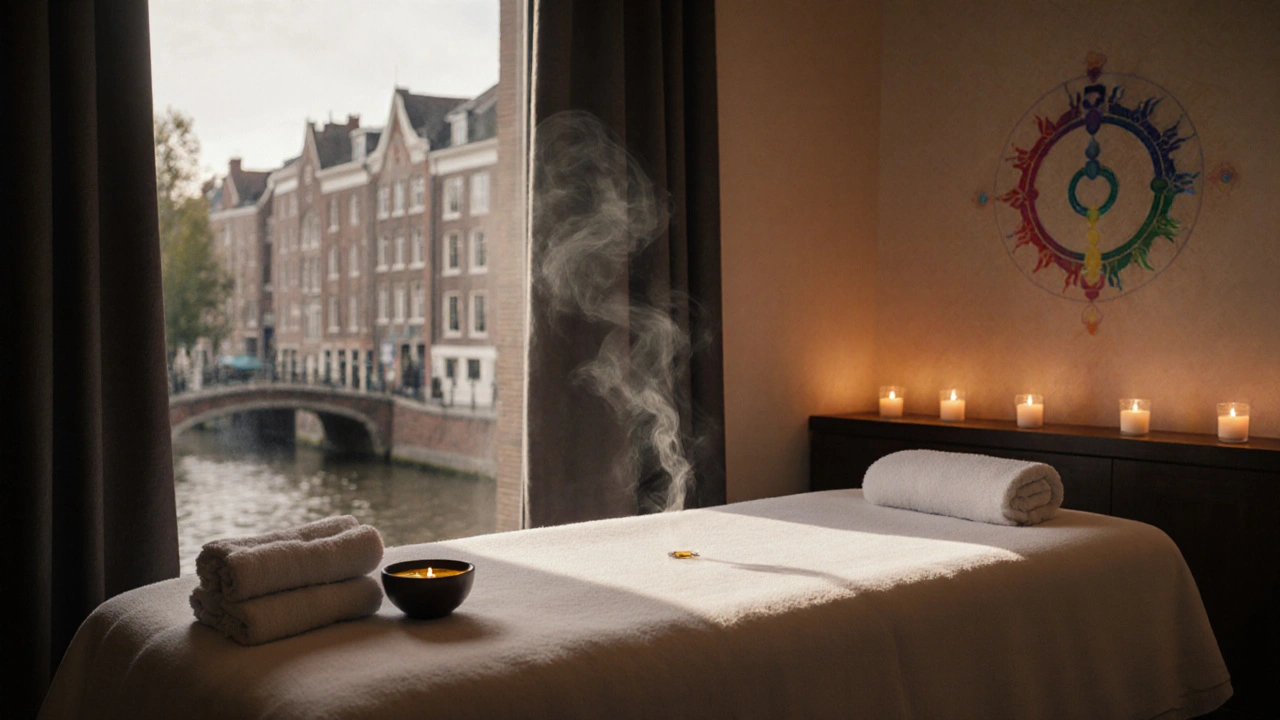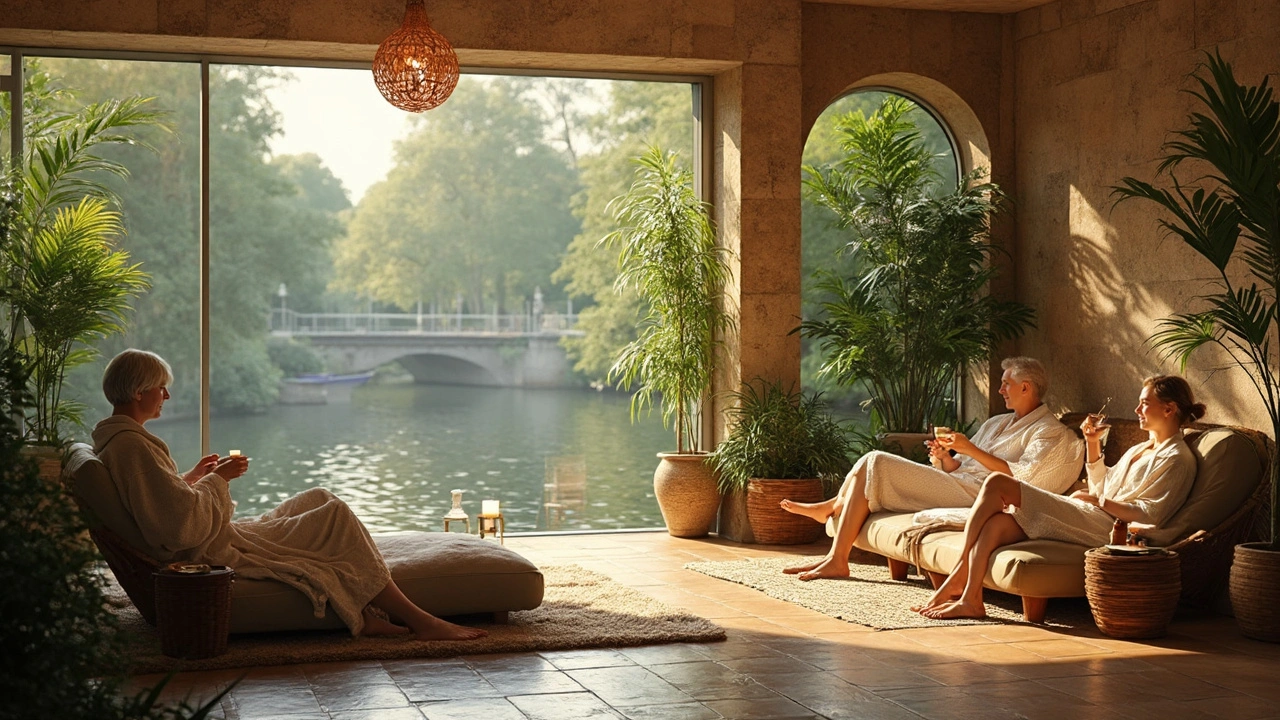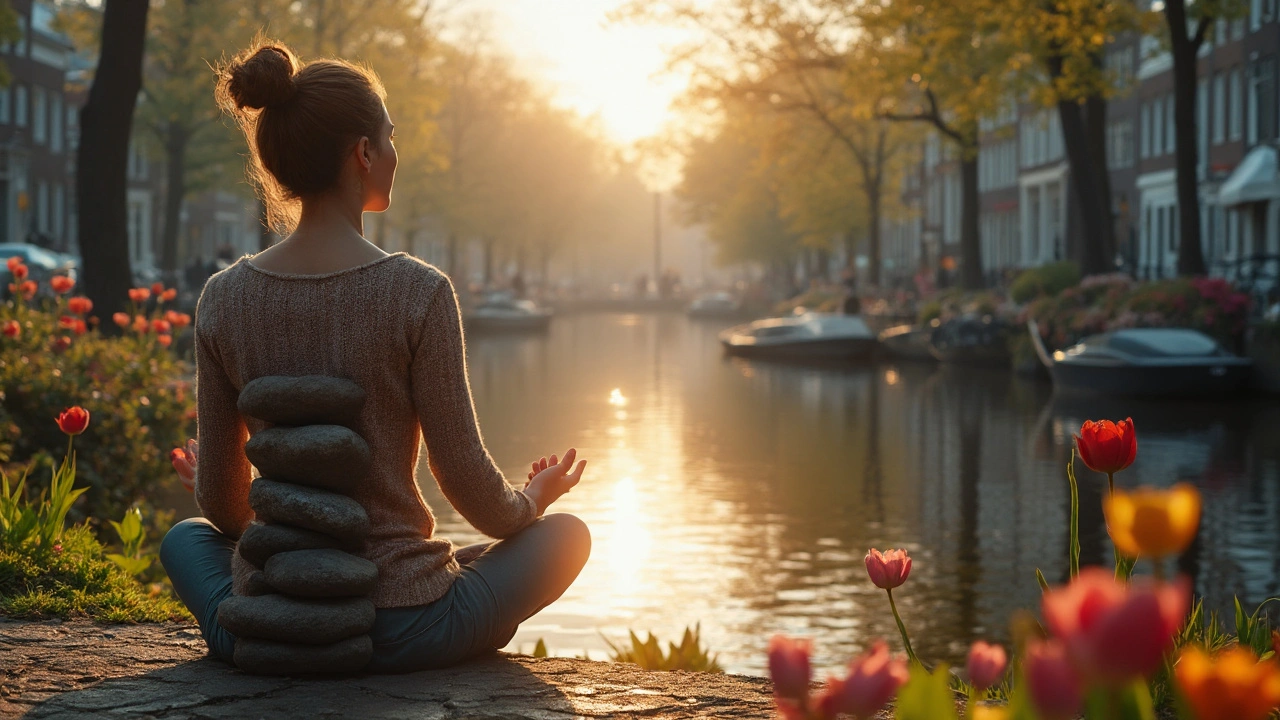Tantric Massage Techniques for Ultimate Relaxation

Key Takeaways
- Tantric massage blends touch, breath, and energy to release deep tension.
- Core techniques include synchronized breathing, chakra awareness, and focused body-to-body contact.
- Practicing safely means choosing a certified therapist, setting clear boundaries, and respecting consent.
- Typical sessions last 60-90 minutes and cost €80‑€150 in Amsterdam.
- Tantric massage differs from Swedish or deep‑tissue styles by emphasizing pleasure and spiritual connection.
Direct Answer
If you want a hands‑on method that melts stress while awakening sensual energy, try Tantric Massage Techniques. By combining slow, intentional strokes with breath syncing and chakra focus, you can achieve a state of deep relaxation that lasts long after the session ends.
Comprehensive Guide to Tantric Massage
Imagine stepping into a softly lit room, the scent of sandalwood drifting in, and a gentle wave of warmth spreading from your shoulders down to your toes. That's the vibe many clients describe after a well‑executed tantric session. This guide walks you through the what, why, and how of tantric massage so you can decide if it’s the right path for your personal wellness journey.
Definition and Context
When exploring deeper relaxation, Tantric Massage is a mind‑body practice that blends gentle touch, breathwork, and energy awareness to release tension and awaken pleasure. It draws from ancient Indian tantra, which views sexuality as a conduit for spiritual growth, not just physical release. Modern practitioners adapt these principles for therapeutic settings, focusing on consent, intimacy, and holistic well‑being.
Unlike a typical spa massage, tantric sessions often incorporate Breathwork-slow, deep inhalations synced with the therapist’s strokes-to stimulate the nervous system and encourage an internal flow of energy. The goal is to shift stagnant ‘blockages’ in the body’s subtle channels, sometimes referred to as Chakras, and create a sense of unified calm.
Benefits of Tantric Massage
- Stress reduction: The combined effect of touch and breath lowers cortisol and promotes parasympathetic activation.
- Enhanced body awareness: Focusing on subtle sensations helps you reconnect with parts of the body you often ignore.
- Improved intimacy: By learning to stay present with pleasure, many report better connection with partners.
- Energy balancing: Practitioners aim to clear and realign the Energy Flow, which can lead to increased vitality.
- Emotional release: Gentle pressure on areas like the lower back or hips can unlock stored emotions.
Clients in Amsterdam often tell us they feel a “reset button” has been pressed-tension eases, thoughts quiet down, and a lingering sense of calm persists for days.

Types of Tantric Massage Available in Amsterdam
Amsterdam’s vibrant wellness scene offers several specialized variations. Choose the one that aligns with your comfort level and goals:
- Lingam Massage: Focuses on the male genital area, using slow, rhythmic strokes to build and release sexual energy.
- Yoni Massage: Tailored for individuals with vaginas, emphasizing gentle pressure and breath integration.
- Full‑Body Tantra: A holistic session that travels from head to toe, often incorporating crystal or warm oil work.
- Couples Tantra: Two participants share synchronized breathing and touch, fostering shared intimacy.
- Sensory Environment sessions: Emphasize ambient sound, aromatherapy, and lighting to heighten the mind‑body connection.
How to Find Tantric Massage Services in Amsterdam
Finding a trustworthy therapist is crucial. Here’s a step‑by‑step plan:
- Search reputable directories like WellnessAmsterdam.com or the local chapter of the International Association of Tantra Practitioners.
- Check for certifications: Look for training from recognized schools such as the Tantra Institute Amsterdam or similar.
- Read client reviews. Focus on comments about professionalism, hygiene, and clear communication of boundaries.
- Schedule a brief phone or video chat. Ask about the therapist’s approach, session length, and any preparatory instructions.
- Verify the space. A professional studio should provide clean linens, a private room, and optional amenities like a warm shower.
Most studios are located around the Jordaan and De Pijp neighborhoods, close to public transport and cafés-perfect for a pre‑session coffee.
What to Expect During a Session
A typical tantric massage in Amsterdam follows a relaxed yet structured flow:
- Introduction (5‑10 min): You and the therapist discuss goals, consent, and any areas you’d like to focus on or avoid.
- Grounding (5 min): You sit or lie down while the therapist guides you through a few deep breaths, helping you settle into the space.
- Body Mapping (10‑15 min): Light, exploratory strokes map your body’s tension points, often combined with gentle verbal cues about breath.
- Focused Tantra (30‑40 min): Depending on the chosen style (e.g., Lingam, Yoni, or full‑body), the therapist uses slow, intentional pressure, rotating the breath in sync with each movement. This stage may involve gentle vocalizations or mantras to deepen relaxation.
- Integration (5‑10 min): The therapist assists you in slowly returning to a normal state, sometimes offering water or a short meditation.
Clothing policies vary-some studios prefer full nudity for maximal contact, while others allow you to keep on underwear. Whatever you choose, the key is comfort and consent.
Pricing and Booking
In Amsterdam, a 60‑minute tantric massage typically costs €80‑€110, while a 90‑minute session ranges from €120‑€150. Packages of three or more sessions often offer a 10‑15% discount. Booking is usually done online via the studio’s website or through a phone call. Most places require a 24‑hour notice and a small deposit to secure the slot.

Safety Tips
- Verify the therapist’s credentials and ask to see proof of training.
- Discuss any medical conditions (e.g., recent surgery, skin issues) before the session starts.
- Establish a clear safe word or hand signal if you need the pressure reduced or the session stopped.
- Ensure the studio follows strict hygiene practices: fresh linens, clean surfaces, and hand washing.
- Listen to your body. If a technique feels uncomfortable, speak up immediately.
Comparison Table: Tantric Massage vs. Swedish Massage in Amsterdam
| Aspect | Tantric Massage | Swedish Massage |
|---|---|---|
| Primary Goal | Energy release, sensual relaxation | Muscle tension relief, circulation |
| Typical Duration | 60‑90min (often longer) | 45‑60min |
| Key Techniques | Breath sync, chakra focus, intimate touch | Effleurage, petrissage, friction |
| Clothing | Optional nudity, underwear allowed | Clothing or drape, usually fully clothed |
| Average Cost (Amsterdam) | €80‑€150 | €60‑€100 |
| Emotional Component | High - focuses on intimacy and release | Low - primarily physical |
Frequently Asked Questions
Is tantric massage sexual?
Tantric massage can be erotic, but it is not meant to be prostitution. The focus is on energy flow, consent, and holistic relaxation. A professional therapist will always respect your boundaries and stop if you feel uncomfortable.
Do I need prior experience with tantra?
No. Sessions are designed for beginners, with the therapist guiding you through breath and movement. Having an open mind helps, but prior knowledge isn’t required.
What should I wear?
Most studios let you choose: full nudity for maximum contact, underwear only, or even light clothing if that feels safer. Discuss your preference during the pre‑session chat.
How often can I get a tantric massage?
Many clients schedule a session every 2‑4 weeks to maintain the benefits. If you’re new, start with one session and see how your body reacts before setting a regular cadence.
Are there any health risks?
Risks are minimal when you work with a certified therapist. Avoid sessions if you have acute injuries, severe skin conditions, or are in the first trimester of pregnancy without consulting a medical professional.
Ready to Experience Deep Relaxation?
If you’re curious about how Tantric Massage can shift your stress levels and spark a new sense of body confidence, start by researching a studio in the Jordaan or De Pijp districts. Book a short introductory session, communicate your comfort zones, and let the breath‑guided touch do its magic.



Srimon Meka
October 17, 2025 AT 14:10Listen up, if you’re chasing real relaxation you’ve got to treat your body like a temple, not a vending machine. Tantric massage isn’t just about tickling the senses; it’s a disciplined dance of breath, touch, and intention. Sync your inhalations with the therapist’s strokes and you’ll feel tension melt like ice on a hot day. Don’t ignore the chakra mapping – those energy hubs act like pressure valves for stress. The whole process demands consent and clear boundaries, otherwise you end up with a chaotic session. In Amsterdam you’ll find certified practitioners who actually respect the protocol, so do your homework before you book. A 60‑minute slot will cost you €80‑€110, but the payoff is a mind‑body reset that lasts days. Commit to the practice regularly and you’ll notice a steady rise in vitality and focus. So gear up, be present, and let the breath‑guided touch do its magic.
Cheryl Ying
October 17, 2025 AT 15:00The whole thing reeks of commodified spirituality!
William Driscoll
October 17, 2025 AT 16:06The article presents a thorough overview of tantric massage, yet it overlooks several critical distinctions that seasoned practitioners would deem essential. First, the claim that breath synchronization alone can unblock chakras simplifies a complex energetic system that has been studied for millennia. Second, the pricing range cited for Amsterdam studios fails to account for the variance in practitioner qualifications, which directly influences therapeutic efficacy. Third, the safety guidelines mention a "safe word or hand signal" but do not elaborate on the nuanced consent protocols that are standard in reputable tantra training programs. Moreover, the comparison table juxtaposes tantric and Swedish massage without acknowledging that the former integrates psychospiritual elements that are entirely absent in the latter. While the description of lingam and yoni techniques is accurate, it neglects to mention the importance of post‑session integration practices such as grounding meditation. The omission of a discussion on contraindications-especially for individuals with recent surgeries or severe skin conditions-is a glaring oversight. In addition, the article’s tone occasionally drifts toward promotional language, which can blur the line between informative content and marketing. For readers seeking authentic experiences, it is advisable to verify a therapist’s lineage and training through recognized institutions like the International Association of Tantra Practitioners. Understanding the therapist’s methodological approach-whether they emphasize somatic awareness, energetic flow, or a hybrid model-greatly influences client outcomes. The brief mention of aromatherapy and crystal work is intriguing, yet the piece does not explore how these adjuncts interact with the primary touch techniques. Practitioners who incorporate sound healing, for instance, often report deeper states of relaxation, an aspect worth investigating further. Lastly, the recommendation to schedule sessions every two to four weeks should be individualized based on personal health status and therapeutic goals. Readers are encouraged to approach tantric massage with both curiosity and discernment, avoiding the trap of treating it as a novelty spa service. In summary, while the guide provides a solid foundation, a more nuanced exploration of consent, practitioner credentials, and integrative practices would elevate its utility for serious seekers.
matthew mcclane
October 17, 2025 AT 17:30It’s crucial to respect personal boundaries while exploring any form of bodywork, especially when intimacy is involved. Choosing a certified therapist and discussing limits beforehand creates a safe space for genuine relaxation.
Emmanuel Jolly
October 17, 2025 AT 18:53In the grand theater of human experience, tantric massage stands as a rite of passage toward self‑realization, a ceremonial unveiling of suppressed currents. The ritualistic breathwork acts as a conduit, channeling the latent fire within the soma. Yet, without disciplined intention, the practice degenerates into a hollow performance, a mere spectacle for the senses. One must approach the session with the humility of a pilgrim and the curiosity of an alchemist. Only then does the delicate dance between touch and spirit yield the transformative elixir promised by ancient sages. Remember, true power lies not in the therapist’s hands but in the willingness of the recipient to surrender to the flow.
Krishna Prasad Regmi
October 17, 2025 AT 20:33When you’re new to tantra, start with a short introductory session and pay close attention to how your body responds. Keep the communication open about pressure levels and any discomfort – the therapist is there to guide, not to push. Regular practice, even once a month, can reinforce the calming benefits and deepen your breath awareness. Stay curious, stay safe, and let the experience enhance your overall well‑being.